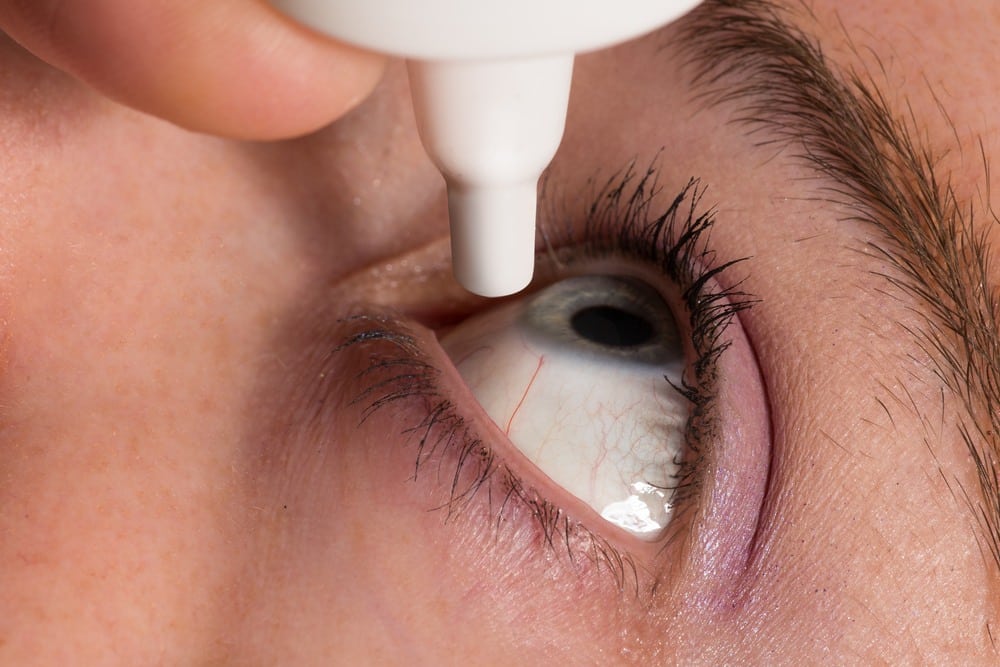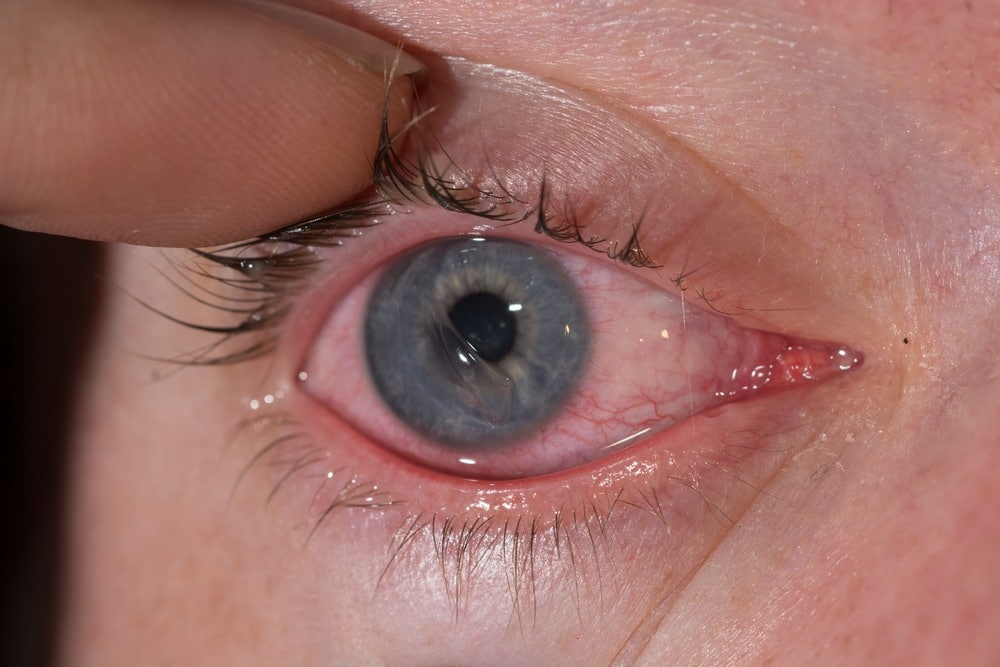First, the bad news: corneal abrasions are painful. The good news is that a corneal abrasion will often clear up in a matter of days, with medical care bringing about a faster recovery. Read on to learn more about this common eye injury, how to avoid it, and how your eye doctor might treat a corneal abrasion.
What Is a Corneal Abrasion?
The clear area at the center of the front of the eye that we see through is called the cornea. When the cornea gets scratched by a fingernail, foreign object, or contact lens, the injury is called a corneal abrasion.
Corneal abrasions can vary from mild to severe. Most of the time, a corneal abrasion will heal on its own. In the case of an infection stemming from a corneal abrasion, a severe corneal abrasion, or elevated pain from a corneal abrasion, it’s best to seek medical care.
Your doctor may prescribe eye drops to help speed healing. Sometimes doctors will place a lens over the injury to make the patient more comfortable.
What to Do When You Have a Scratched Eye
You will know when you’ve injured your cornea because the eye is very sensitive. If your eye hurts after you’ve scratched it, you likely have a corneal abrasion.
Corneal abrasions happen easily, occurring when you walk into a tree branch, scratch your eye with your fingernail when removing contact lenses, get sand in your eye at the beach, or take a zippered pullover off. Even rubbing a fingertip on the surface of the corneal can cause a corneal abrasion.
Follow these dos and don’ts if you think you may have a corneal abrasion:
- Do blink your eye several times to help wash away any dirt or debris and keep the eye lubricated.
- Do pull your upper eyelid over the lower lid.
- Do rinse your eye with saline solution or clean water.
- Don’t rub your eye as that can cause further injury to the cornea.
- Don’t remove anything that is stuck in the cornea. That is best done by an eye doctor during an urgent care eye examination.
When to See a Doctor?

Often a corneal abrasion will heal on its own but seeing an eye doctor is essential if you have blurry vision after an eye injury or eye pain that doesn’t resolve within a few hours. Other symptoms of concern include feeling like you have something in your eye and sensitivity to light.
Eye emergency care is required for some corneal abrasions, especially ones in which debris is still in the eye. Our specialists will ask you what happened, so we can know as much as possible about how the injury occurred.
Treating Scratched Eyes
While your injured eye may feel itchy, avoid rubbing your eye if you have a corneal abrasion. Rubbing your eye will only make a corneal abrasion worse.
Your eye doctor will examine your scratched eye for corneal abrasions and remove any foreign objects in your eye. Anesthetic eye drops will keep your eye more comfortable.
You may be prescribed eye drops to keep your eye lubricated, which will make infection less likely and add to your comfort. If you wear contact lenses, you may have to switch to wearing glasses for a few days as your eye heals.
Patients with severe corneal abrasions may need oral pain medication to deal with the sensitivity and pain. Sometimes, when treating scratched eyes, a doctor places a lens on top of the corneal abrasion for comfort and to prevent further damage.
Larger corneal abrasions will take longer to heal than smaller corneal abrasions, but most of the time a scratched eye will heal within a few days.
Prognosis of Corneal Abrasions
Urgent care for severe corneal abrasions improves the prognosis since professional eye care prevents further injury and infection. Any debris is removed in the examination.
Patients have an easier time recovering from their corneal abrasions when medications like eye drops and oral pain medication are prescribed to make them more comfortable during the healing process.
Most corneal abrasions usually heal completely with no remaining vision problems afterward. However, the surface of the cornea may not be as smooth as it was before the injury.
Feeling that the eye still has a foreign object in it after a corneal abrasion is a sign that the corneal epithelium, the thin layer of cells on the surface of the cornea, may be sloughing off. When epithelial cells grow back and then slough off again, it is called a recurrent corneal erosion. This uncomfortable condition can occur days or even years after a corneal abrasion.
Eye doctors who treat scratched eyes might prescribe eye drops to lubricate the eye in the case of a recurrent corneal erosion. Some patients with this condition may have to stop wearing contact lenses for vision correction. Severe cases of recurrent corneal erosion may require surgery.
Ways to Prevent a Scratched Eye
The best move is always preventing a scratched eye rather than treating scratched eyes. Simple safety measures such as wearing eye protection when doing yard work, playing sports, or spending time on the beach can prevent getting a scratched eye. Keeping fingernails trimmed will reduce the chance contact lens wearers will get a corneal abrasion.
Making sure your contact lenses fit well and are clean will also reduce your chances of corneal abrasions related to wearing contacts, as will putting them in and removing them with clean hands.
If you think you have a scratched eye, don’t rub it. Rinse your eye with saline solution or clean water and blink to help keep the eye lubricated and to remove dirt. Wear sunglasses to ease light sensitivity.
Corneal Abrasion in a Nutshell
Your eyes are sensitive and can be easily injured. A few grains of sand can leave you with a painful corneal abrasion. Though most corneal abrasions heal within a few days, treating scratched eyes is essential to corneal abrasions that leave debris in the eye since that can lead to infection or further injury.
Since eye injuries can easily occur, protecting the eyes from injury is essential when playing sports, mowing the lawn, woodworking, or doing other activities that could result in an eye injury. Protective eye gear can prevent a scratched eye. Even wearing sunglasses on a windy day at the beach prevents injury.
Clear Eyesight Is On the Horizon

If you have a scratched eye that’s painful, we offer urgent care at Art of Optiks that will protect your vision and help in the healing process. Schedule your comprehensive eye exam at Art of Optiks to get the best care and comfort after suffering a corneal abrasion. By choosing Art of Optiks care for your corneal abrasion, you have a lower chance of complications like recurrent corneal erosion and infection. Contact us today to speak with one of our team members about your eye care needs.

